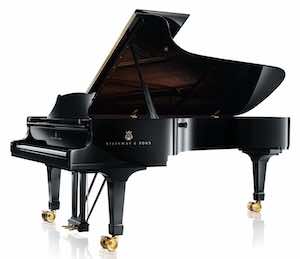Top > Instruments > Piano > Number of Piano Pedals
This site introduces unknown composer Emanuel Bach (C. P. E. Bach). This English version was translated from Japanese one by ChatGPT.
The Number of Pedals on the Piano Compared to the Fortepiano
Hearing that some fortepianos had six pedals, I asked ChatGPT: "Modern pianos donʼt have as many as six types of pedals, so why has the number of pedals decreased?"
Modern pianos generally have three pedals (the damper pedal, soft pedal, and sostenuto pedal), but historically, during the era of the fortepiano, there were instruments with six or more pedals and levers. The reduction in the number of pedals was largely influenced by the evolution of instrument design, changes in musical expression, and the practicality of performance.

Evolution of Piano Design
As the fortepiano developed, its acoustics and structure underwent significant changes. Modern pianos naturally produce greater volume and richer tones, allowing for diverse expressions without the need for complex pedal systems. While fortepianos required mechanisms like inserting felt or cloth to alter sounds, modern pianos no longer need such devices.
Changes in Musical Expression
From the 18th to the 19th century, musical styles and expressions evolved. In the eras of Mozart and Beethoven, the diverse pedals of the fortepiano were used to pursue delicate tonal changes. However, from the Romantic period onward, composers sought more dynamic and powerful expressions. Accordingly, the need for elaborate pedal mechanisms diminished, and three pedals became sufficient for expressive performance.
Practicality in Performance
An excessive number of pedals makes operation too complex for performers. During the fortepiano era, musicians sometimes operated levers with their knees or hands, but this often proved inconvenient during performances. To make the piano more user-friendly, the essential pedals were streamlined to three.
Progress in Standardization
As piano manufacturing became standardized, the design of instruments became unified. By the 19th century, grand and upright pianos resembling todayʼs models became widespread, and the pedals were standardized along with them. Through this process, unnecessary pedals and complicated mechanisms were eliminated, and the simple three-pedal system became the norm.
Technical Improvements
Modern pianos feature highly advanced damper and sostenuto pedals, allowing for more precise control of sound sustain and dynamics. This eliminated the need for additional complex pedals. In particular, improvements to the damper pedal enabled a wide range of musical expression with just one pedal.
As a result, modern pianos have evolved to cover all forms of musical expression with just three pedals. This reduction in pedal count has made the piano easier to play without sacrificing expressive capabilities.